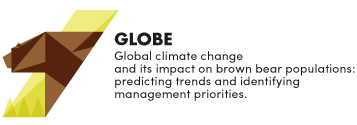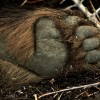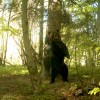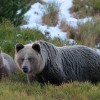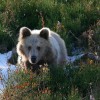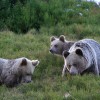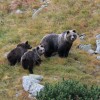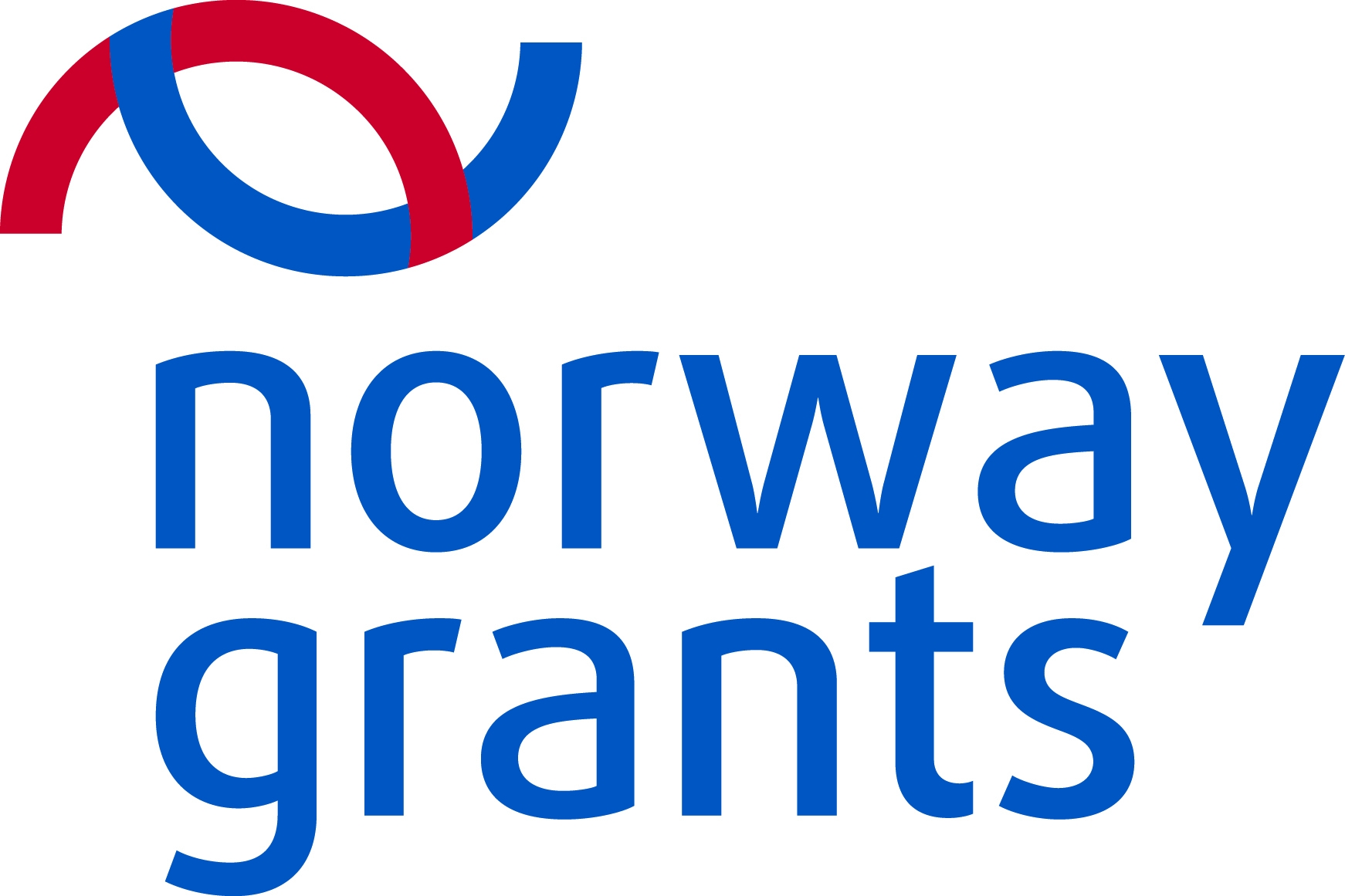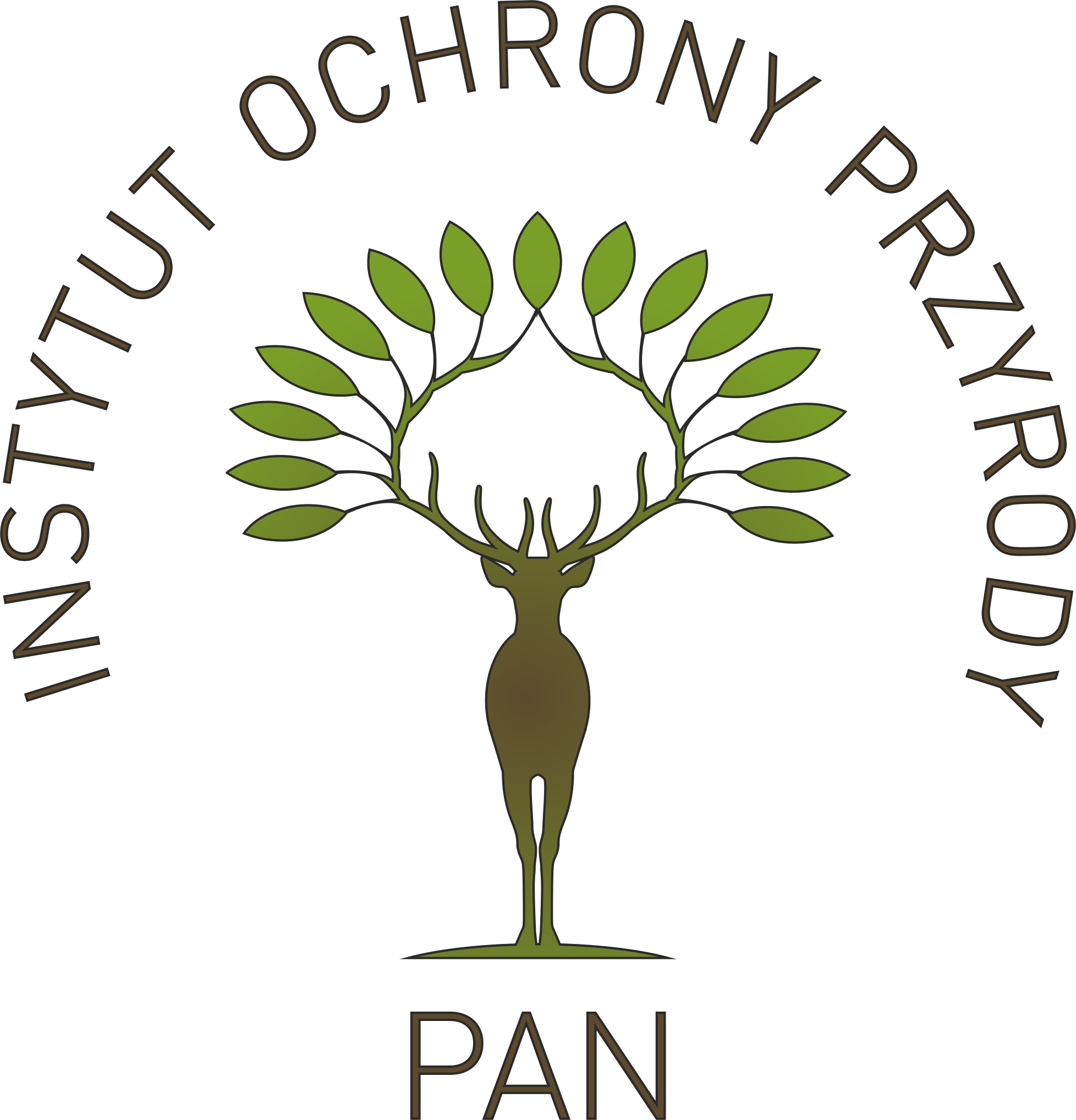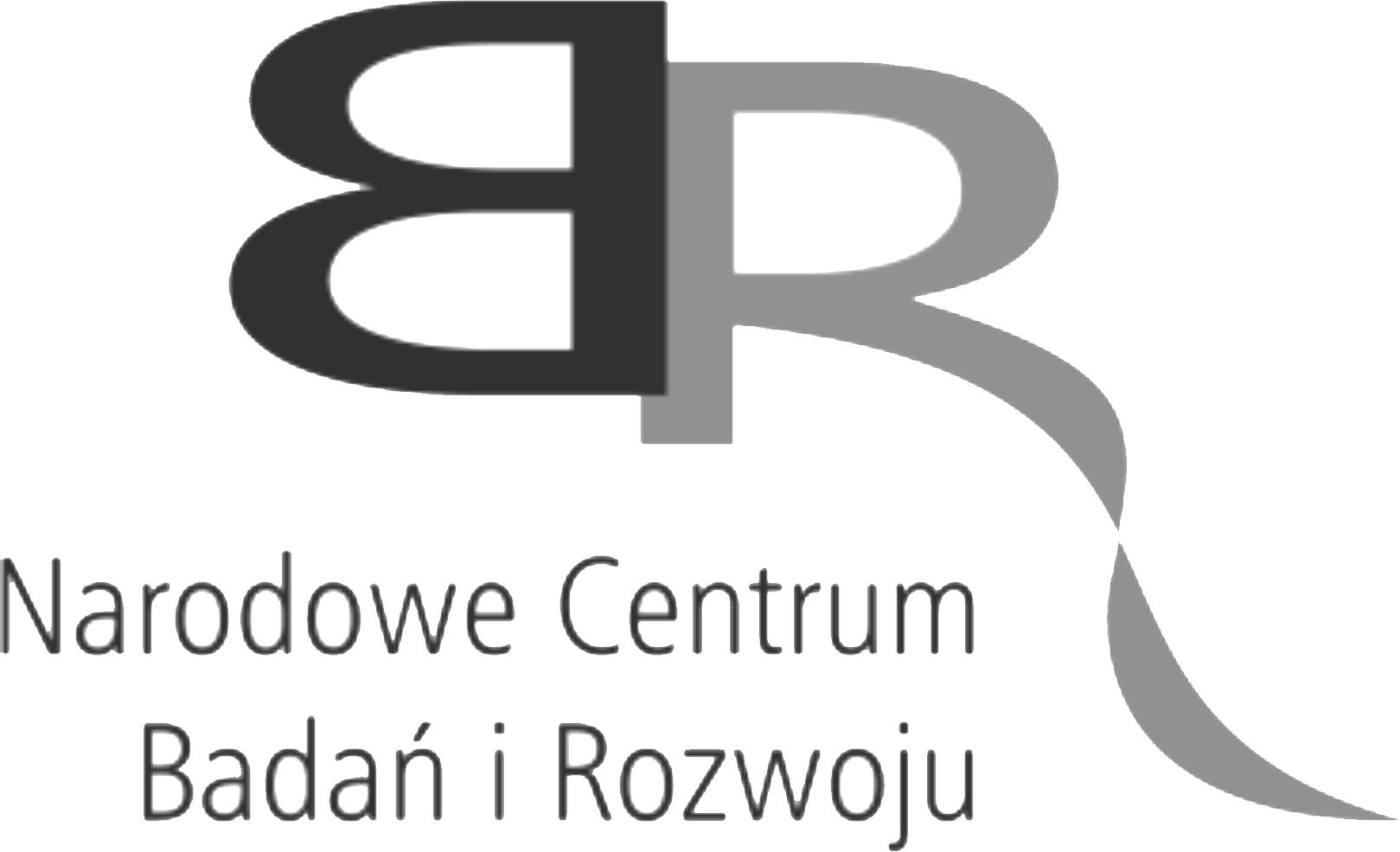Carpathian Brown Bear Project www.carpathianbear.pl
Scandinavian Brown Bear Research Project www.bearproject.info
Tatra National Park www.tpn.pl
International Association for Bear Research and Management http://www.bearbiology.com
Intergovernmental Panel on Climate Change http://www.ipcc.ch/
Institute of Nature Conservation PAS http://www.iop.krakow.pl/
Warsaw Ecological Economics Centre http://www.en.woee.pl/
Stated preference methods have long been an invaluable research tool in understanding consumer behaviour, and their popularity has increased further in recent years. Stated preference methods identify behavioural responses in hypothetical settings which are not revealed in the market, or where the attribute levels offered by existing choices are modified to such an extent that the reliability of revealed preference models as predictors of response is brought into question. They are widely used in different areas ranging from environmental and health applications to transport and marketing.
Stated preference methods include a number of different approaches, where the two most popular are Choice Experiment and Contingent Valuation. In "choice experiment" respondents are asked to indicate the most preferred option from a limited set of alternatives that vary in terms of their explicit characteristics, also known as attributes. In "contingent valuation" respondents are asked whether or not they would be willing to pay a certain amount of money for a given change in the level (or quality) of a valued good.
Climate-induced effects on brown bear populations may include an increase (or decrease) in bear numbers, an expansion (or shrinkage) of their range into new areas or bears being more active in winter, and, therefore, may increase the probability of occurrence of human-bear encounters. Most injuries caused by brown bears to humans seem to be associated with the period prior to, during and post denning. One of the aims of GLOBE is assessing with the use of stated preference methods the economic and human dimension of projected changes in human bear relations.
This aim will be achieved by:
• Assessing the values associated with brown bears in Poland and Norway. We will conduct a stated preference study, in which preferences regarding the existing brown bear populations will be assessed. The surveys will be conducted in both countries on two samples: a representative national sample and a representative sample of people living in the regions where brown bears are present.
• Determine the socio-economic impact that an increase in the brown bear population and an expansion of their current distribution range into new areas would have in both countries. This objective will be achieved by conducting an stated preference study in which different scenarios of brown bear range expansion related to climate change will be presented to respondents.
• Explore whether there is a positive/negative relation between bear presence in a given area and willingness to pay for its protection. Understanding this relationship is essential for an effective conservation strategy. Special emphasis will be put in areas where brown bears are currently not present, but could be present in the future due to population expansion or range shifts.
• Investigate the socio-economic consequences of potential changes in bear’s ecology and behavior (e.g. bears being active in winter may increase the probability of encounters with humans). This will be examined by carrying out a choice experiment study on a sample of tourists in the Tatra National Park.
Stress is a measure of an animal response (behavioral and physiological) to changes in its environment. It can be measured directly by looking at changes in concentrations of glucocorticoids (GC, e.g. cortisol). This is the focus of recently wide developed and successfully used endocrinology methods in conservation-related field research. The primary role of GCs is basic energy regulation. At low and moderate levels GCs influence feeding and act on the liver, adipose tissue and muscle to maintain circulation of adequate portions of glucose and fatty acids. They can be modulatory on a seasonal basis in response to predictable changes in the animal’s balance between required energy and the energy available in the environment. When an animal encounters an unexpected challenge, it enters a state of stress with GCs raising and initiating physiological and behavioral changes to cope with the challenge. If the situation is prolonged and GCs remain high inducing chronic stress, it can become detrimental to health and fitness and decrease animal’s ability to cope with additional stressors.
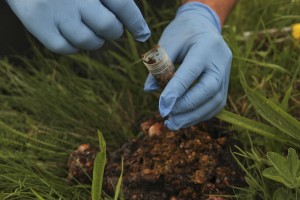
Stress can be measured by GCs concentrations in the blood plasma, urine, hairs and feces. In our study we will focus on hair and feces that can be obtained non-invasively and validations of the methods for the species were already successfully done. The GCs metabolites levels in bear feces show short-term stress - possible stressful events that happened 12-16 hours before defecation. The samples will be stored frozen, and then established methods for extraction of corticosteroids and employing the group-specific polyclonal antibodies will be used for analysis. To obtain the picture of long-term stress, the level of cortisol in hairs will be analyzed with the same method as for feces. Cortisol in hairs is already proved to be a reliable indicator of long-term stress also in bears and reflects the challenges of the season in which hairs grow. In some cases, metabolites of testosterone, estradiol and progesterone will be also measured. The results will be then related to climate and environmental correlates in the study areas.
By combining the results from “long-term stress” measures (using hair cortisol concentrations as describe above) and “short-term stress” (using glucocorticoid concentration in fecal samples) we are going to assess how human disturbance and activities mediate climate-induced effects on physiological stress levels of brown bears. We will also investigate individual differences in cortisol concentrations in relation to features of the individual home range (e.g. habitat fragmentation, level of human pressure or urbanization, portion of protected landscape). We aim also to explore the link between stress levels and brown bear winter and foraging ecology. We will investigate whether climate change and related changes in food availability and winter activity are reflected in hair cortisol levels.
Some elements on Earth occur in more than one stable form, called isotopes. Stable isotopes are distinct from radioactive isotopes in that they do not decay over time. Stable isotopes are atoms of a particular chemical element which differ in the number of neutrons, while maintaining the same number of protons. For example, carbon occurs in 2 stable forms: the lighter, 12C, has 6 protons and 6 neutrons and thus an atomic mass of 12; the heavier, 13C, has 6 protons and 7 neutrons and atomic mass of 13. Usually, the heavier stable isotopes of elements are rare in nature and can be used as tracers. Among biologically important elements such as Hydrogen (H), Carbon (C), Nitrogen (N), Oxygen (O) and Sulphur (S), the lightest stable isotope is around 20 times more abundant than its heavier counterpart. The relative abundance of the heavy isotope compared with the light isotope (e.g. 13C/12C) can be measured using a mass spectrometer, and expressed as a ratio. This ratio of the heavy to light isotope can then be standardized against international reference samples (standards) and reported in the delta (δ) notation as parts per thousand or per mil (‰). As animals “are what they eat”, the isotope ratios in their tissues, called isotope signatures, can be used to make inferences about the diets of animals and the type of habitats in which they live.

Some keratinous tissues like hair, feather, or nail are metabolically inert following synthesis and so maintain an isotopic record reflecting the average diet in the period the tissue was synthesized, thus eliminating some shortcomings of traditional diet studies. Other tissues are metabolically active and provide information about the diet from a few days in the case of liver or blood plasma, to several weeks in the case of muscle or whole blood, to the lifetime of the individual in the case of bone collagen. Traditionally, carbon and nitrogen isotopes have been the main elements used in dietary analyses, while oxygen, hydrogen and sulphur have been extensively used to track animal movements, habitat use (e.g. marine vs terrestrial), and to study climatic changes.
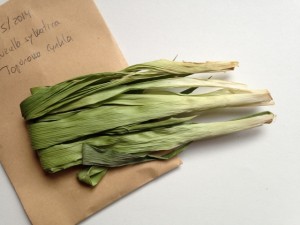 In recent years, the application of stable isotope analyses as a tool for tackling ecological research problems has increased dramatically. Stable isotopes applications range a broad range of disciplines: plant and animal physiology and ecology; analysis of terrestrial, marine and freshwater ecosystem; animal migration and movements; pollution studies; atmospheric science; conservation biology; and fossil and archaeological research. Isotopes are also extremely useful tracers in ecological systems and have a great potential to provide short-, medium-, and long-term histories of ecological processes. At the landscape level, isotope maps (isoscapes) are becoming an important tool to monitor human influence.
In recent years, the application of stable isotope analyses as a tool for tackling ecological research problems has increased dramatically. Stable isotopes applications range a broad range of disciplines: plant and animal physiology and ecology; analysis of terrestrial, marine and freshwater ecosystem; animal migration and movements; pollution studies; atmospheric science; conservation biology; and fossil and archaeological research. Isotopes are also extremely useful tracers in ecological systems and have a great potential to provide short-, medium-, and long-term histories of ecological processes. At the landscape level, isotope maps (isoscapes) are becoming an important tool to monitor human influence.
We will conduct stable isotope analysis of historic and recent brown bear tissues, mainly hairs and bones, in both the Carpathian and Scandinavian bear populations. Potential bear foods, of both vegetal and animal origin, will be also collected in the study areas and analyzed.
On the photos (by Nuria Selva): brown bear hair and sample of dried Luzula sylvatica
Telemetry requires capturing and immobilizing bears so they can be equipped with a collar which allows to take bear’s position. Captures are done from helicopter and using box and Aldrich traps with an alarm system. During immobilization we take measures and samples according to established protocols to assess the bear’s condition. We use GPS-GSM-VHF collars with a drop-off system. This means that the belt of the collar opens and drops after a scheduled period of time. Additionally, the collar drop-off can be activated through a radio-remote control. These collars havea GPS receiver, a GSM-module and a radio transmitter (VHF). Once fitted to a bear, the GPS-GSM module is located on the top of the collar, and the battery down to counteract the weight.
GPS-GSM collars allow to collect a large amount of high-quality data, given that bears’ positions are taken very accurately. GPS is a satellite navigation system. By receiving signals from satellites, the GPS (Global Positioning System) receiver in the collar calculates its position in longitude, latitude and elevation. Hence one will get a very precise picture of the animal’s movements independently of time of day and area. However, each positioning requires battery power, making the positioning frequency a trade-off between how often one needs positions for the study and how long one needs to collect data from that bear. The disadvantage of GPS-collars is that they are technically complicated and not as robust as the radio-collars, and they are very expensive.
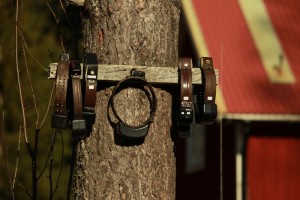
The radio transmitter (VHF) in the collars allows to manually localize (radio-track) bears with a receiver that picks up VHF radio signals from the collar at certain distance. By triangulating directions of the signal, we can estimate the position of the animal (generally within a few hundred meters accuracy). To receive the transmitter signal from ground, we must be within a few kilometers, or sometimes a few hundred meters, from the bear, depending on terrain. Radio-tracking in mountainous areas is more complicated. We radio-track from cars, by foot and sometimes also by helicopter. Additionally, the collars have a temperature and activity sensor.
In our study we programmed the receivers to take a position at different time intervals (every 30 min, 1, 2, 3 or 4 hours) during spring, summer and fall, and less frequently during winter, while the bears are denning. All bears’ positions and activity data are saved in the GPS, and additionally the GSM module sends the latest positions as an SMS to a receiving station connected to a computer. The GPS-positioning schedule can be reprogrammed according to the needs. Very frequent positioning enables us to study more precisely aspects of bears’ biology at smaller scales, such as their movements through the landscape, predation and individual behavior. By having few bears equipped with GPS-collars simultaneously in the same area, we can investigate interactions among bears.
Photo by Filip Zięba
Czym są pliki Cookie
Ciasteczka (ang. cookies) to niewielkie pliki, zapisywane i przechowywane na twoim komputerze, tablecie lub smartphonie podczas gdy odwiedzasz różne strony w internecie. Ciasteczko zazwyczaj zawiera nazwę strony internetowej, z której pochodzi, „długość życia” ciasteczka (to znaczy czas jego istnienia), oraz przypadkowo wygenerowany unikalny numer służący do identyfikacji przeglądarki, z jakiej następuje połączenie ze stroną internetową.
Polityka plików Cookie
1. W związku z udostępnianiem zawartości serwisu internetowego globeproject.pl stosuje się tzw. cookies, tj. informacje zapisywane przez serwery na urządzeniu końcowym użytkownika, które serwery mogą odczytać przy każdorazowym połączeniu się z tego urządzenia końcowego, może także używać innych technologii o funkcjach podobnych lub tożsamych z cookies. W niniejszym dokumencie, informacje dotyczące cookies mają zastosowanie również do innych podobnych technologii stosowanych w ramach naszych serwisów internetowych. Pliki cookies (tzw. "ciasteczka") stanowią dane informatyczne, w szczególności pliki tekstowe, które przechowywane są w urządzeniu końcowym użytkownika serwisu internetowego globeproject.pl. Cookies zazwyczaj zawierają nazwę domeny serwisu internetowego, z którego pochodzą, czas przechowywania ich na urządzeniu końcowym oraz unikalny numer.
2. Pliki cookies wykorzystywane są w celu:
- dostosowania zawartości stron serwisu internetowego do preferencji użytkownika oraz optymalizacji korzystania ze stron internetowych; w szczególności pliki te pozwalają rozpoznać urządzenie użytkownika serwisu internetowego i odpowiednio wyświetlić stronę internetową, dostosowaną do jego indywidualnych potrzeb,
- tworzenia statystyk, które pomagają zrozumieć, w jaki sposób użytkownicy serwisu korzystają ze stron internetowych, co umożliwia ulepszanie ich struktury i zawartości,
- utrzymania sesji użytkownika serwisu internetowego (po zalogowaniu), dzięki której użytkownik nie musi na każdej podstronie serwisu ponownie wpisywać loginu i hasła,
3. W ramach serwisu internetowego globeproject.pl możemy stosować następujące rodzaje plików cookies:
- "niezbędne" pliki cookies, umożliwiające korzystanie z usług dostępnych w ramach serwisu internetowego, np. uwierzytelniające pliki cookies wykorzystywane do usług wymagających uwierzytelniania w ramach serwisu,
- pliki cookies służące do zapewnienia bezpieczeństwa, np. wykorzystywane do wykrywania nadużyć w zakresie uwierzytelniania w ramach serwisu,
- pliki cookies, umożliwiające zbieranie informacji o sposobie korzystania ze stron internetowych serwisu,
- "funkcjonalne" pliki cookies, umożliwiające "zapamiętanie" wybranych przez użytkownika ustawień i personalizację interfejsu użytkownika, np. w zakresie wybranego języka lub regionu, z którego pochodzi użytkownik, rozmiaru czcionki, wyglądu strony internetowej itp.,
4. W wielu przypadkach oprogramowanie służące do przeglądania stron internetowych (przeglądarka internetowa) domyślnie dopuszcza przechowywanie plików cookies w urządzeniu końcowym użytkownika. Użytkownicy serwisu mogą dokonać w każdym czasie zmiany ustawień dotyczących plików cookies. Ustawienia te mogą zostać zmienione w szczególności w taki sposób, aby blokować automatyczną obsługę plików cookies w ustawieniach przeglądarki internetowej bądź informować o ich każdorazowym zamieszczeniu w urządzeniu użytkownika serwisu internetowego. Szczegółowe informacje o możliwości i sposobach obsługi plików cookies dostępne są w ustawieniach oprogramowania (przeglądarki internetowej). Niedokonanie zmiany ustawień w zakresie cookies oznacza, że będą one zamieszczone w urządzeniu końcowym użytkownika, a tym samym będziemy przechowywać informacje w urządzeniu końcowym użytkownika i uzyskiwać dostęp do tych informacji.
5. Wyłączenie stosowania cookies może spowodować utrudnienia korzystania z niektórych usług w ramach naszego serwisu internetowego. Wyłączenie opcji przyjmowania cookies nie powoduje natomiast braku możliwości czytania lub oglądania treści zamieszczanych w serwisie internetowym globeproject.pl z zastrzeżeniem tych, do których dostęp wymaga logowania.
Jak wyłączyć pliki cookie w przeglądarce?
Przeglądarka Opera
Przeglądarka Firefox
Przeglądarka Chrome
Przeglądarka Internet Explorer
Przeglądarka Safari
Reports
DO NOT FEED BEARS!
Bears inhabiting Polish Tatras live very close to humans. But sometimes they come too close. "Danka", along with her three cubs, try to use the rest of the food from unsecured trash. Filip Zięba from the Tatra National Park and Nuria Selva from the Institute of Nature PAS took part in the film material prepared by Renata Kijowska for one of the most influential Polish information programs, Fakty TVN. Once again they asked for proper protection of trash and for not leaving the remains of food in easily accessible places. They also highlighted the importance of the bears’ behavior research (eg. telemetry). We strongly recommend! https://fakty.tvn24.pl/ogladaj-online,60/tatrzanskie-niedzwiedzie-podchodza-coraz-blizej-ludzi,781184.html [material in Polish]
"CLIMATE CHANGES KEEP BEARS AWAKE" - GLOBE IN POLISH TV
The issue of climate changes impact on the biology and ecology of bears interested Polish information TV programme, "Teleekspress". TV editor Michael Hajdenrajch prepared material in which Dr. Agnieszka Sergiel and Prof. Nuria Selva explained how climate changes influence the behavior, physiology and diet of polar and brown bears. We recommend this short but very interesting material http://teleexpress.tvp.pl/27324629/zmiany-klimatu-spedzaja-niedzwiedziom-sen-z-powiek .(unfortunately only in Polish).
INTERVIEW WITH NURIA SELVA
An interesting interview with Nuria Selva, leader of the GLOBE project, was published in one of the most influential Polish weeklies, “Tygodnik Powszechny”. Nuria talks about her research, about Puszcza Białowieska, about bears and about her perception of life. Truly interesting read (unfortunately only in Polish)!
SKANDINAVIAN BROWN BEAR FEMALES PROTECT THEIR CUBS BY LIVING CLOSER TO HUMANS
Virginia Morell from ScienceMag.org wrote a note on a study on the behavior of mother brown bears in Scandinavia. Adult male bears are known to kill cubs that are not theirs—and sometimes the mother that defends them. A new study by the Scandinavian Brown Bear Research Project team, authored by Steyaert et al. suggest that brown bear females use humans as protective associates to shield her cubs from male attacks. Read that interesting story at http://www.sciencemag.org/news/2016/06/mother-brown-bears-protect-cubs-human-shields.
"DANCING WITH NATURE" ON BEARS
We recommend to all interested in the research on the brown bears a movie from the series "Dancing with Nature" realised by the TVP http://www.tanczacyznatura.tvp.pl/21488540/odcinek-5-wsluchani-w-niedzwiedzia. Nuria Selva, Tomasz Zwijacz-Kozica and Filip Zieba talk about what and how we study in, among others, the GLOBE project.
"This time "Dancing with Nature" are looking for signs of bears. When hiking in the Tatra you need to keep your eyes wide open. What matters are the scratches on the tree, bones scattered among pines, large animal droppings on a wild meadow, hair left on husky trunk, but also all traces around Zakopane garbage dams and surrounded shelters. At all these diligently look Assoc. prof. Nuria Selva, a bear researcher and Filip Zieba, an employee of the Tatra National Park. They trace Tatra bears with aerial telemetry. When "Dancing with Nature" move into the forest, they find out that bears are often just around the corner, even in the middle of the day, though it can not be seen and heard." We highly recommend it!
MEDIA ON IWO'S INCREDIBLE JOURNEY
The incredible Iwo’s journey was an exciting experience not only for the bear, but also to Polish, Hungarian and Slovakian scientists, nature conservationists, and nature enthusiasts. The media cover on Iwo’s current whereabouts was impressive. Below there are links to the articles, press notes, social media releases referring to the Iwo’s journey from Poland to Hungary and back:
http://naukawpolsce.pap.pl/aktualnosci/news,404851,z-tatr-na-wegry---tygodniowa-wedrowka-niedzwiedzia-iwa.html [naukawpolsce.pap.pl, in Polish]
http://wyborcza.pl/1,75400,17858022,Niezwykla_wedrowka_polskiego_niedzwiedzia_na_Wegry.html [wyborcza.pl, in Polish]
http://tpn.pl/nowosci/niezwykla-wedrowka-iwa-na-poludnie [tpn.pl, in Polish]
http://www.gazetakrakowska.pl/artykul/3849357,tak-tatrzanski-niedzwiedz-wedrowal-na-wegry-mapa,id,t.html [Gazeta Krakowska, in Polish]
http://www.dziennikpolski24.pl/artykul/3850921,niedzwiedz-poszedl-na-baciarke,id,t.html [dziennikpolski24.pl, in Polish]
http://podroze.onet.pl/przyroda/jeden-z-tatrzanskich-niedzwiedzi-zawedrowal-az-na-wegry/q8n6z9 [podroze.onet.pl, in Polish]
http://natatry.pl/artykuly/niedzwiedz-iwo [natatry.pl, in Polish]
http://www.ekologia.pl/ciekawostki/niesamowita-wedrowka-niedzwiedzia-iwo,20404.html [ekologia.pl, in Polish]
http://www.tvn24.pl/krakow,50/wedrowka-polskiego-niedzwiedzia-na-wegry-iwo-to-wytrawny-podroznik,539481.html [tvn24.pl, in Polish]
http://www.voyage.pl/polska/5030/iwo-dotarl-na-wegry [voyage.pl, in Polish]
http://www.rmf24.pl/fakty/polska/news-niezwykla-wedrowka-tatrzanskiego-niedzwiedzia,nId,1733606 [rmf24.pl, in Polish]
http://www.fakt.pl/krakow/tatrzanski-niedzwiedz-wedrowiec,artykuly,542873.html [fakt.pl, in Polish]
http://krakow.gazeta.pl/krakow/1,44425,17942278,Tatrzanski_niedzwiedz_podroznik__Zawedrowal_na_Wegry.html#BoxLokKrakLink [gazeta.pl, in Polish]
http://www.pap.pl/palio/html.run?_Instance=cms_www.pap.pl&_PageID=1&s=infopakiet&dz=nauka&idNewsComp=&filename=&idnews=213668&data=&status=biezace&_CheckSum=-1144667502 [pap.pl, in Polish]
https://www.facebook.com/AggtelekiNemzetiParkIgazgatosag [facebook website of the Aggteleki Nemzeti Park with regular updates on Iwo's journey]
http://anp.hu/hu/articles/site/show/598/minden_amit_iworol_tudni_erdemes [in Hungarian]
http://omvk.hu/hirek/lassuk-a-medvet-%E2%80%93-segitsunk-a-kutatoknak!.html [in Hungarian]
http://www.rfi.fr/hebdo/20150515-pologne-hongrie-slovaquie-nature-incroyable-voyage-ours-iwo-carpates-environnement/ [a radio report and article made on national French radio last Friday by a reporter based in Budapest, in French]
http://wilderness-society.org/iwos-incredible-journey-to-the-south/ [in English]
http://scienceinpoland.pap.pl/en/news/news,404989,from-the-tatra-mountains-to-hungary---one-week-hike-of-the-bear-iwo.html [in English]
http://www.treehugger.hu/node/8933 [in English]
http://newsok.com/polish-brown-bear-crosses-borders-highway-seeking-mate/article/feed/842915 [in English]
http://www.lcie.org/Home/ArtMID/6976/ArticleID/80/Iwo-the-bears-incredible-journey [in English]
http://www.thenews.pl/1/9/Artykul/207623,Iwo-the-bear-returns-to-Poland [in English]
http://indianexpress.com/article/trending/polish-brown-bear-crosses-borders-highways-in-search-of-mate-returns-home/ [in English]
NATURAL HISTORY MUSEUM OF SIBIU, ROMANIA INFORMS ABOUT THE GLOBE RESEARCH
To investigate changes in the foraging behaviour of the Carpathian brown bears during the last few hundred years the GLOBE team was taking bone samples from recent and historic brown bear specimens from the various natural history museums and collections allover Europe, including the Natural History Museum in Sibiu.
FIRST CAPTURE IN 2014 WITHIN THE COOPERATION BETWEEN TPN AND INSTITUTE OF NATURE CONSERVATION
Information about our first bear (Hugo) trapped and collared within the cooperation agreement between the Institute of Nature Conservation PAS and Tatra National Park on 31st March 2014 in the local radio Radio Krakow.
NOTE ON THE GLOBE PROJECT IN THE "INTERNATIONAL BEAR NEWS" SUMMER 2014 VOLUME!
"International Bear News", a Quarterly Newsletter of the International Association for Bear Research and Management (IBA) and the IUCN/SSC Bear Specialist Group, in the latest volume (Summer 2014 Vol. 23 no.2) published a "News from the GLOBE – Disentangling the Impacts of Global Climate Change on Brown Bear Populations". We invite all those who want to know more about our project to read more!
GLOBE team members presentations on the 23rd International Conference on Bear Research and Management, Thessaloniki (Greece), 5-11.11.2014.
1. Selva N., Berezowska-Cnota T., Hobson K.A., Bojarska K., Elguero-Claramunt I., Teitelbaum C., Mueller T. Food for thought: supplementary feeding of ungulates affects brown bear foraging
2. Zwijacz-Kozica T., Zięba F., Klimecki M., Krzan P., Selva N. Documented observation of female infanticide in brown bears: Predation or act of desperation.
3. Bautista C., Selva N., Fernandez N., Revilla E., Scharf A.K., Karamandilis A.K., Rigg R., Jerina K., Shkvyria M., Huber D., Palazon S., Ciucci P., Groff C., Dutsov A., Kont R., Adamec M., Naves J. Patterns and correlates of brown bear damages in Europe
4. Sergiel A., Maślak R., Zedrosser A., Paśko Ł., Garshelis D.L., Reljić S., Huber D. Fellatio in captive brown bears: evidence of longterm effects of suckling deprivation?
5. Fernandez N., Selva N., Yuste C., Okarma H., Jakubiec Z. Living at the edge: habitat requirements of brown bears in the Northern Carpathians
6. Zięba F., Zwijacz-Kozica T., Nowak Z., Majko P., Lenko P., Selva N. Getting transboundary cooperation into practice: brown bear genetic monitoring in the Tatra mountains
7. Swenson J.A. When conservation works; relatively good news about large carnivore recovery in Europe
8. Zedrosser A., Elfstrom M., Steyaert S.M.J.G., Swenson J.E. Why do bears occur close to people? An European perspective.
SCIENTIFIC PUBLICATIONS:
Bombieri G., J. Naves, V. Penteriani, N. Selva, A. Fernández-Gil, J. V. López-Bao, H. Ambarli, C. Bautista, T. Bespalova, V. Bobrov, V. Bolshakov, S. Bondarchuk, J. J. Camarra, S. Chiriac, P. Ciucci, A. Dutsov, I. Dykyy, J. M. Fedriani, A. García-Rodríguez, P. J. Garrote, S. Gashev, C. Groff, B. Gutleb, M. Haring, S. Härkönen, D. Huber, M. Kaboli, Y. Kalinkin, A. A. Karamanlidis, V. Karpin, V. Kastrikin, L. Khlyap, P. Khoetsky, I. Kojola, Y. Kozlow, A. Korolev, N. Korytin, V. Kozsheechkin, M. Krofel, J. Kurhinen, I. Kuznetsova, E. Larin, A. Levykh, V. Mamontov, P. Männil, D. Melovski, Y. Mertzanis, A. Meydus, A. Mohammadi, H. Norberg, S. Palazón, L. M. Pătrașcu, K. Pavlova, P. Pedrini, P. Y. Quenette, E. Revilla, R. Rigg, Y. Rozhkov, L. F. Russo, A. Rykov, L. Saburova, V. Sahlén, A. P. Saveljev, I. V. Seryodkin, A. Shelekhov, A. Shishikin, M. Shkvyria, V. Sidorovich, V. Sopin, O. Støen, J. Stofik, J. E. Swenson, D. Tirski, A. Vasin, P. Wabakken, L. Yarushina, T. Zwijacz-Kozica & M. M. Delgado. 2019. Brown bear attacks on humans: a worldwide perspective. Scientific Reports 9, Article number: 8573 https://doi.org/10.1038/s41598-019-44341-w
Bautista C., Revilla E., Naves J., Albrecht J., Fernández N., Olszańska A., Adamec M., Berezowska-Cnota T., Ciucci P., Groff C., Härkönen S., Huber D., Jerina K., Jonozovič M., Karamanlidis A.A., Palazón S., Quenette P.-I., Rigg R., Seijas J., Swenson J.E., Talvi T., Selva N. 2019. Large carnivore damage in Europe: analysis of compensation and prevention programs. Biological Conservation 235: 308-316 https://doi.org/10.1016/j.biocon.2019.04.019
Bartoń K.A., Zwijacz-Kozica T., Zięba F., Sergiel A., Selva N. 2019. Bears without borders: Long-distance movement in human-dominated landscapes. Global Ecology and Conservation, Available online 28 January 2019, e00541
2017. Humans and climate change drove the Holocene decline of the brown bear. Scientific Reports 7: 10399
Sergiel A., Naves J., Kujawski P., Maślak R., Serwa E., Ramos D., Fernández-Gil A., Revilla E., Zwijacz-Kozica T., Zięba F., Painer J., Selva N. 2017. Histological, chemical and behavioural evidence of pedal communication in brown bears. Scientific Reports 7:1052
Swenson J.E., Schneider M., Zedrosser A., Söderberg A., Franzén R., Kindberg J. 2017. Challenges of managing a European brown bear population; lessons from Sweden, 1943-2013. Wildlife Biology 2017: wlb.00251
Sergiel A., Hobson K. A., Janz D. M., Cattet M., Selva N., Kapronczai L., Gryba C., Zedrosser A. 2017. Compatibility of preparatory procedures for the analysis of cortisol concentrations and stable isotope (δ13C, δ15N) ratios: a test on brown bear hair. Conservation Physiology 5(1): COX021
Leclerc M., Frank S.C., Zedrosser A., Swenson J.E., Pelletier F. 2017. Hunting promotes spatial reorganization and sexually selected infanticide. Scientific Reports 7:45222
Bischof R.S. Steyaert M.J.G., Kindberg J. 2017. Caught in the mesh: roads and their network-scale impediment to animal movement. Ecography 40: 001–012, 2017
Gosselin J., Leclerc M., Zedrosser A., Steyaert S.M.J.G., Swenson J. E., Pelletier F. 2016. Hunting promotes sexual conflict in brown bears. Journal of Animal Ecology 86:35-42
Ordiz A., Sæbø S., Kindberg J., Swenson J.E., Støen O.-G. 2016. Seasonality and human disturbance alter brown bear activity patterns: implications for circumpolar carnivore conservation? Animal Conservation 20 (1): 51-60
Leclerc M., Van der Wal E., Zedrosser A., Swenson J.E., Kindberg J., Pelletier F. 2016. Quantifying consistent individual differences in habitat selection. Oecologia 180: 697–705
Hertel A.G., Zedrosser A., Mysterud A., Støen O.-G., Steyaert S.M.G.J., Swenson J.E. 2016. Temporal effects of hunting on foraging behavior of an apex predator: Do bears forego foraging when risk is high? Oecologia (2016) 182:1019–1029 DOI 10.1007/s00442-016-3729-8
Leclerc M., Van der Wal E., Zedrosser A., Swenson J.E., Kindberg J., Pelletier F. 2016. Quantifying consistent individual differences in habitat selection. Oecologia (2016) 180:697–705 DOI 10.1007/s00442-015-3500-6
Ordiz A., Sæbø S., Kindberg J., Swenson J.E., Støen O.-G. 2016. Seasonality and human disturbance alter brown bear activity patterns: implications for circumpolar carnivore conservation? Animal Conservation 2016 DOI:10.1111/acv.12284
Bautista C., Naves J., Revilla E., Fernández N., Albrecht J., Scharf A.K., Rigg R., Karamanlidis A.A., Jerina K., Huber D., Palazón S., Kont R., Ciucci P., Groff C., Dutsov A., Seijas J., Quenette P-Y., Olszańska A., Shkvyria M., Adamec M., Ozolins J., Jonozovič M., Selva N. 2016. Patterns and correlates of claims for brown bear damage on a continental scale. Journal of Applied Ecology DOI: 10.1111/1365-2664.12708
Steyaert S.M.J.G., Leclerc M., Pelletier F., Kindberg J., Brunberg S., Swenson J.E., Zedrosser A. 2016. Human shields mediate sexual conflict in a top predator. Proc. R. Soc. B 283: 20160906. DOI: http://dx.doi.org/10.1098/rspb.
Steyaert S.M.J.G., Zedrosser A., Elfstrom M., Ordiz A., Leclerc M., Frank S.C., Kindberg J., Støen O.-G., Brunberg S., Swenson J.E. 2016. Ecological implications from spatial patterns in human-caused brown bear mortality. Wildlife Biology 22(4): 144-152 DOI: http://dx.doi.org/10.2981/wlb.00165
Leclerc M., Van de Walle J., Zedrosser A., Swenson J.E., Pelletier F. 2016. Can hunting data be used to estimate unbiased population parameters? A case study on brown bears. Biology Letters 12: 20160197. http://dx.doi.org/10.1098/rsbl.2016.0197
Ziolkowska E., Ostapowicz K., Radeloff V., Kuemmerle T., Sergiel A., Zwijacz-Kozica T., Zięba F., Śmietana W., Selva N. 2016. Assessing differences in connectivity based on habitat versus movement models for brown bears in the Carpathians. Landscape Ecology 03/2016; DOI: 10.1007/s10980-016-0368-8
Hertel A., Steyaert S.M.J.G., Zedrosser A., Mysterud A., Lodberg-Holm H., Wathne-Gelink H., Kindberg J., Swenson J.E. 2016. Bears and berries: species-specific selective foraging on a patchily distributed food resource in a human-altered landscape. Behavioral Ecology and Sociobiology 03/2016; DOI: 10.1007/s00265-016-2106-2
Evans, A. L., N. J. Singh, A. Friebe, J. M. Arnemo, T. G. Laske, O. Fröbert, J. E. Swenson, and S. Blanc. 2016. Drivers of hibernation in the brown bear. Frontiers in Zoology 13:7, DOI: 10.1186/s12983-016-0140-6.
Stenset, N. E., P. N. Lutnæs, V. Bjarnadóttir, B. Dahle, K. H. Fossum, P. Jigsved, T. Johansen, W. Neumann, O. Opseth, O. Rønning, S. M. J. G. Steyaert, A. Zedrosser, S. Brunberg, and J. E. Swenson. 2016. Seasonal and annual variation in the diet of brown bears Ursus arctos in the boreal forest of southcentral Sweden. Wildlife Biology 22(3): 107-116.
Mateo-Tomas P., Olea P.P., Moleon M., Vicente J., Botella F., Selva N., Vinuela J., Sanchez-Zapata J.A. 2015. From regional to global patterns in vertebrate scavenger communities subsidized by big game hunting. Diversity and Distribution 21 (8): 913–924.
Støen O.-E., Ordiz A., Evans A.L., Laske T.G., Kindberg J., Fröbert O., Swenson J.E., Arnemo J.M. 2015. Physiological evidence for a human-induced landscape of fear in brown bears (Ursus arctos). Physiology and Behavior 152 (2015) 244-248.
Sahlén V., Ordiz A., Swenson J.E., Støen O.G. 2015. Behavioural Differences between Single Scandinavian Brown Bears (Ursus arctos) and Females with Dependent Young When Experimentally Approached by Humans. PLoS ONE 10(4): e0121576. doi:10.1371/journal.pone.0121576
POPULAR PUBLICATIONS:
Zwijacz-Kozica T., Zięba F. 2014. Lato z niedźwiedziami [Summer with the bears], Tatry (50) 4/2014 [in Polish]
Selva N., Swenson J., Zedrosser A., Giergiczny M., Olszańska A., Sergiel A., Zwijacz-Kozica T., Zięba F. 2014. News from the GLOBE – Disentangling the Impacts of Global Climate Change on Brown Bear Populations. International Bear News Vol. 23 no. 2 (2014)
